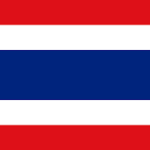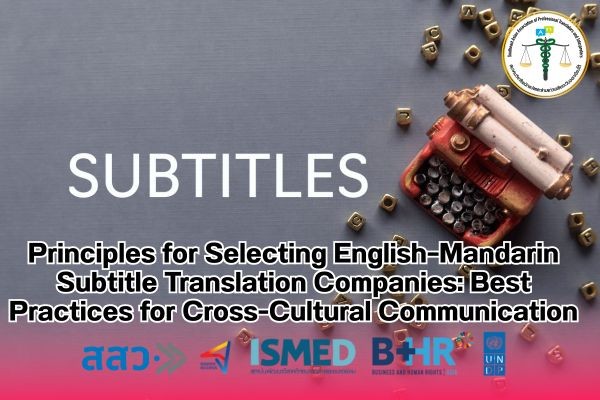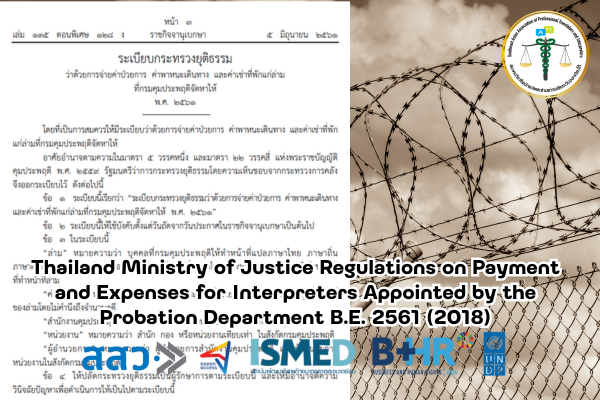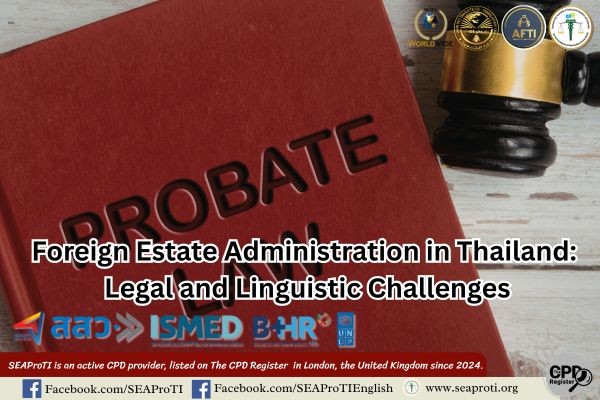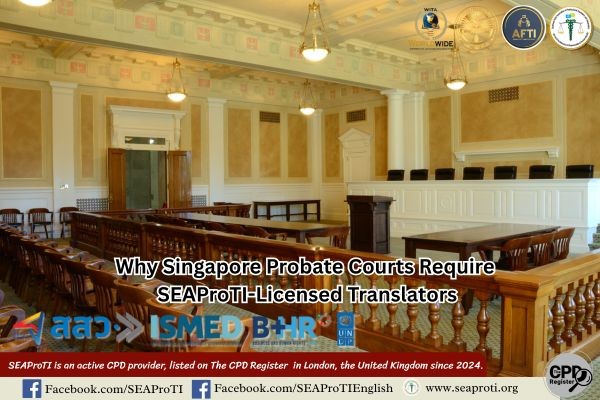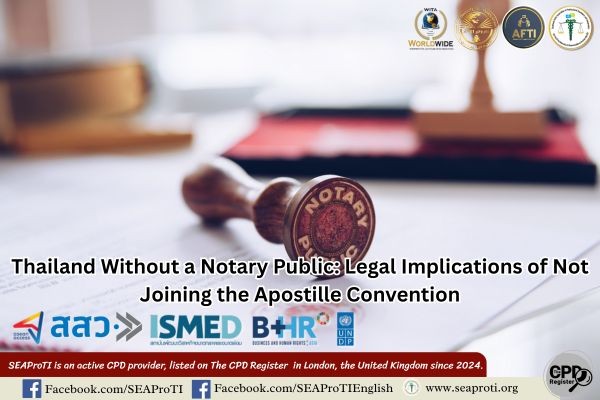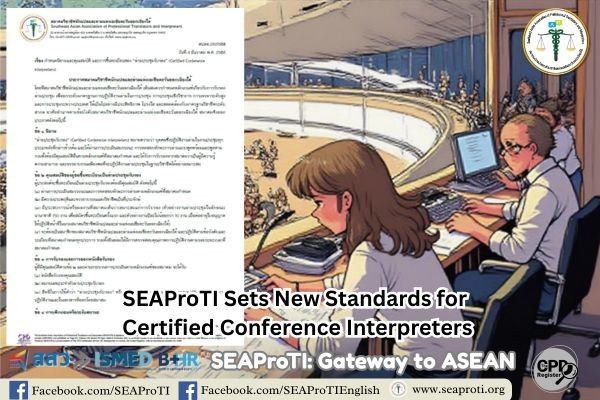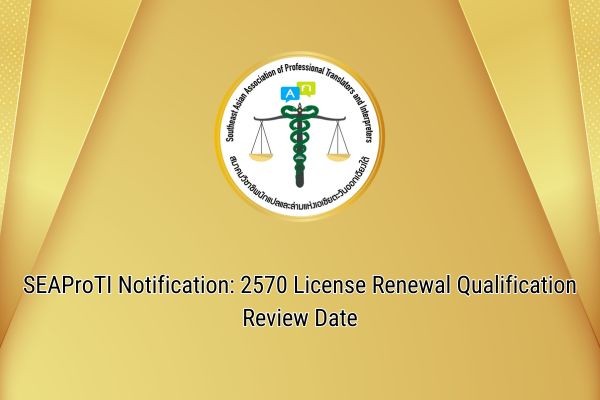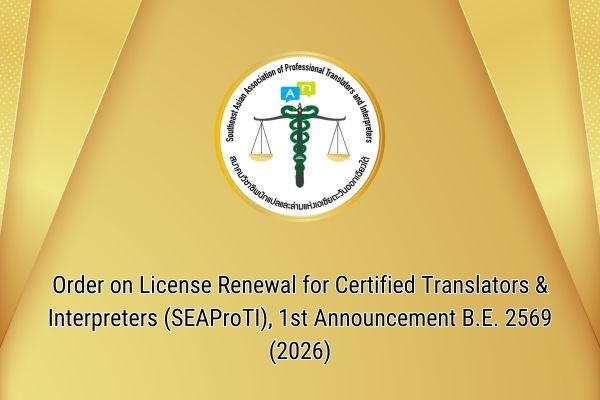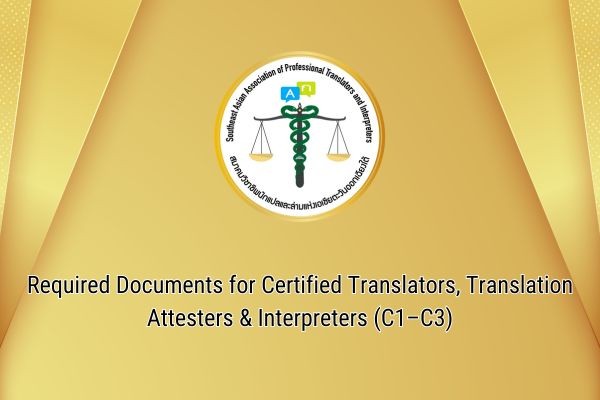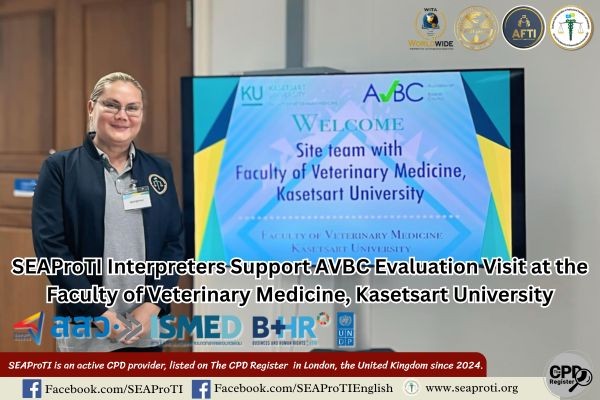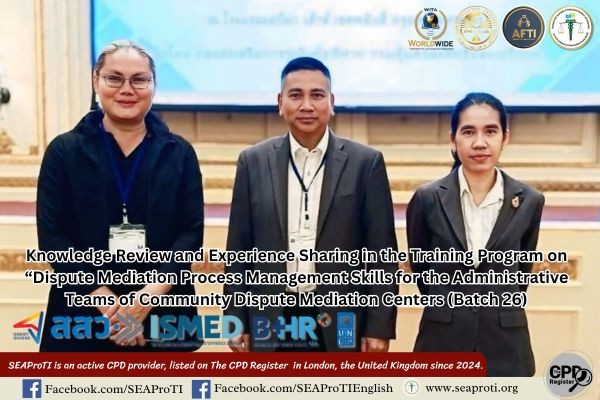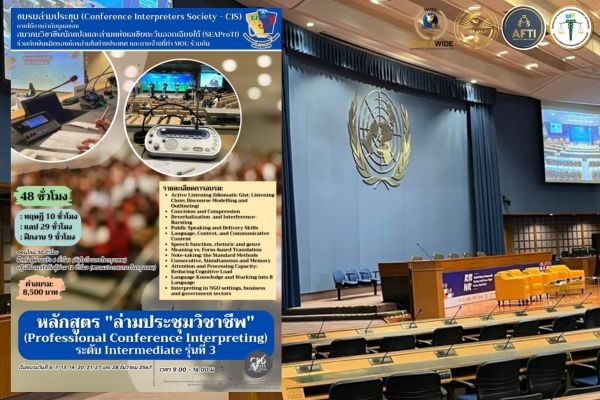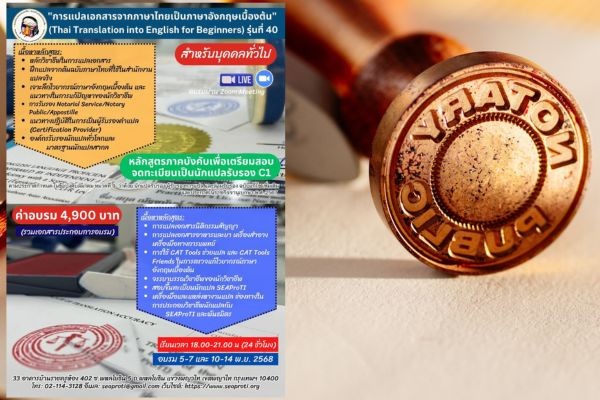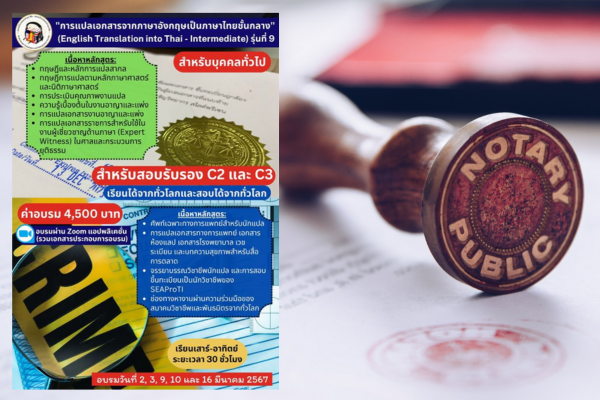Principles for Selecting English–Mandarin Subtitle Translation Companies: Best Practices for Cross-Cultural Communication
Written by: Manatchanok Boonpheng
Edited by: Wanitcha Sumanat
12 July 2025, Bangkok – In today’s globalized world, where films, TV series, and multimedia content are accessible to audiences worldwide, subtitles serve as a critical medium for transmitting messages across languages and cultures. This is particularly true for Chinese-speaking viewers, one of the world’s largest media consumer groups. Translating subtitles from English into Mandarin is not merely a linguistic task but a cultural decoding process that demands expertise, deep cultural understanding, and adherence to international standards.
Challenges in English–Mandarin Subtitle Translation
Subtitle translation between English and Mandarin presents several complexities, ranging from linguistic and tonal structures to cultural nuances and technical limitations.
1. Linguistic Structural Differences
English belongs to the Indo-European language family and features verb conjugation and tense marking, whereas Mandarin, a Sino-Tibetan language, lacks such morphological structures. Mandarin conveys time through word order and adverbs, not conjugation (Wang, 2019). Translators must bridge these differences while maintaining clarity.
2. Tonal and Homophonic Nature of Mandarin
Mandarin is a tonal language in which pitch affects meaning. For example, the syllable “ma” can mean “mother,” “hemp,” “horse,” or “scold” depending on its tone (Yip & Rimmington, 2004). Misinterpreting tone or omitting contextual cues can result in errors.
3. Subtitle Constraints
Subtitles typically allow only 35–42 characters per line and must be readable within six seconds (Díaz Cintas & Remael, 2021). Translators are often required to condense the original dialogue while preserving the core message.
Core Principles in Subtitle Translation
High-quality subtitle translation requires more than word-for-word conversion. It involves linguistic skill, cultural adaptation, and technical competence.
1. Condensation
Translators must distill essential meaning by removing redundancy to ensure subtitles remain concise and readable within time constraints (Gambier, 2013).
2. Audience-Oriented Lexicon
Word choices should align with the target demographic. For instance, translations aimed at younger viewers might use colloquial or trendy language to enhance relatability (Chen, 2020).
3. Conveying Emotion and Pragmatics
Because subtitles lack vocal tone or facial cues, punctuation (e.g., “…”, “!”) is essential for conveying tone, emotional nuance, and pragmatic intent.
4. Fidelity vs. Readability
Translators must balance fidelity to the original meaning with natural-sounding phrasing. Literal translations often feel stiff, while excessive liberty may distort the message (Nornes, 2007).
Guidelines for Selecting English–Mandarin Subtitle Translation Companies
Choosing a high-quality subtitle translation company involves evaluating multiple dimensions beyond pricing:
1. Linguistic and Native-Speaker Expertise
A qualified company should employ native Mandarin speakers with advanced English proficiency and direct experience in subtitle translation (House, 2015). This ensures grammatical accuracy and cultural relevance.
2. Cultural Competence
Subtitle translators must understand both source and target cultures to adapt cultural references, jokes, idioms, and location-specific names for the Chinese audience (Venuti, 2012).
3. Technical Proficiency
Companies should be capable of handling industry-standard subtitle file types such as .srt, .ass, and .vtt, and use tools like Aegisub, Subtitle Edit, and Final Cut Pro for integration with video workflows.
4. Quality Control (QC)
Reliable companies employ robust QA processes, including spelling and grammar checks, context validation, and second-pass review by independent linguists to ensure consistency and accuracy.
5. Project Management Capability
Companies working with global platforms like Netflix, Disney+, or iQIYI must deliver high volumes under tight deadlines while maintaining consistent quality (Netflix, 2023). Strong communication and scheduling systems are essential.
6. Data Security Standards
Confidentiality must be ensured through Non-Disclosure Agreements (NDAs), encrypted file transfer protocols, and permission-based cloud storage systems.
7. Transparent and Flexible Pricing
Reputable vendors provide clear quotes based on per-minute, per-word, or per-project rates, and outline potential extra charges such as transcription or file formatting services.
Case Study: Netflix’s Subtitle Standards
Netflix exemplifies stringent localization standards. Vendors must pass the Hermes Test, which assesses language proficiency, software competence, and cultural sensitivity (Netflix, 2023). Companies wishing to partner with such platforms must invest in ongoing training, software tools, and quality control to meet global expectations.
Conclusion
Selecting an English–Mandarin subtitle translation company is a strategic decision that affects content accessibility, viewer experience, and market success. The ideal partner combines linguistic accuracy, cultural fluency, technical capability, quality assurance, project management efficiency, and data security.
Subtitle translation is more than converting words—it is building cultural understanding and expanding global reach. In a rapidly globalizing media landscape, producers and content distributors must treat subtitle translation not as a secondary task, but as a core investment in international communication.
References
- Chen, X. (2020). Subtitling and translation strategies: Chinese subtitle translation of American sitcoms. Journal of Language and Culture, 5(2), 45–62.
- Díaz Cintas, J., & Remael, A. (2021). Subtitling: Concepts and practices. Routledge.
- Gambier, Y. (2013). The position of audiovisual translation studies. In Y. Gambier & L. van Doorslaer (Eds.), Handbook of translation studies (Vol. 4, pp. 1–9). John Benjamins.
- House, J. (2015). Translation quality assessment: Past and present. Routledge.
- Netflix. (2023). Subtitle timed text style guide – Simplified Chinese. Retrieved from https://partnerhelp.netflixstudios.com/
- Nornes, A. M. (2007). Cinema Babel: Translating global cinema. University of Minnesota Press.
- Venuti, L. (2012). The translator’s invisibility: A history of translation (2nd ed.). Routledge.
- Wang, Y. (2019). The difficulties and strategies in English–Chinese subtitle translation. International Journal of Social Science and Education Research, 2(1), 45–49.
- Yip, P., & Rimmington, D. (2004). Chinese: A comprehensive grammar. Routledge.
SEAProTI’s certified translators, translation certification providers, and certified interpreters:
The Southeast Asian Association of Professional Translators and Interpreters (SEAProTI) has officially announced the criteria and qualifications for individuals to register as “Certified Translators,” “Translation Certification Providers,” and “Certified Interpreters” under the association’s regulations. These guidelines are detailed in Sections 9 and 10 of the Royal Thai Government Gazette, issued by the Secretariat of the Cabinet under the Office of the Prime Minister of the Kingdom of Thailand, dated July 25, 2024, Volume 141, Part 66 Ng, Page 100. the Royal Thai Government Gazette
หลักการเลือกบริษัทแปลซับไตเติลอังกฤษ–จีนกลาง: แนวทางปฏิบัติที่มีประสิทธิภาพในการสื่อสารข้ามภาษา
บทความโดย มนัสชนก บุญเพ็ง
ตรวจแก้โดย วณิชชา สุมานัส
12 กรกฎาคม 2568, กรุงเทพมหานคร – ในยุคโลกาภิวัตน์ที่สื่อบันเทิงสามารถเข้าถึงผู้ชมทั่วโลก “ซับไตเติล” กลายเป็นกลไกสำคัญในการถ่ายทอดข้อความจากหนึ่งภาษาและวัฒนธรรมไปสู่อีกภาษาอย่างมีประสิทธิภาพ โดยเฉพาะเมื่อกล่าวถึงผู้ชมชาวจีน ซึ่งเป็นหนึ่งในกลุ่มผู้ชมที่มีขนาดใหญ่ที่สุดในโลก การแปลซับไตเติลจากภาษาอังกฤษเป็นภาษาจีนกลางจึงมีความสำคัญมากกว่าเพียงแค่การถ่ายทอดความหมายเชิงภาษา แต่เป็นการ “ถอดรหัสวัฒนธรรม” ที่ต้องอาศัยทักษะเฉพาะทาง ความเข้าใจเชิงลึก และมาตรฐานสากลด้านการแปล
ความท้าทายในการแปลซับไตเติลอังกฤษ–จีนกลาง
การแปลระหว่างภาษาอังกฤษและจีนกลางมีความซับซ้อนสูงจากความแตกต่างด้านภาษาศาสตร์และวัฒนธรรม ประเด็นหลักที่ต้องพิจารณาได้แก่:
1. ความแตกต่างของโครงสร้างภาษา
ภาษาอังกฤษในฐานะภาษากลุ่มอินโด-ยูโรเปียนมีการผันกริยา การใช้ tense และโครงสร้างประโยคที่ชัดเจน ขณะที่ภาษาจีนกลางไม่มีการผันคำและใช้ลำดับคำกับคำบอกเวลาเพื่อสื่อความหมาย (Wang, 2019) ผู้แปลจึงต้องถ่ายทอดความหมายโดยไม่สูญเสียความชัดเจนทางไวยากรณ์
2. ระบบวรรณยุกต์และคำพ้องเสียง
จีนกลางเป็นภาษาที่ใช้วรรณยุกต์ซึ่งมีผลต่อความหมายของคำ เช่น คำว่า “ma” สามารถหมายถึงแม่, กัญชา, ม้า หรือ ด่า ขึ้นกับระดับเสียง (Yip & Rimmington, 2004) การแปลที่ไม่เข้าใจบริบทเสียงจะนำไปสู่ความคลาดเคลื่อนได้
3. ข้อจำกัดเชิงเทคนิคของซับไตเติล
ซับไตเติลจำกัดจำนวนอักษรต่อบรรทัด (35–42 ตัวอักษร) และเวลาที่แสดง (ไม่เกิน 6 วินาที) (Díaz Cintas & Remael, 2021) ผู้แปลจึงต้องสรุปเนื้อหาโดยยังรักษาความหมายเดิม
หลักการสำคัญในการแปลซับไตเติล
คุณภาพของซับไตเติลขึ้นอยู่กับความสามารถในการใช้ภาษาและความเข้าใจทางวัฒนธรรม ควบคู่กับทักษะด้านเทคนิค โดยมีหลักสำคัญดังนี้:
1. ความกะทัดรัดและกระชับ (Condensation)
เนื้อหาต้องถูกย่อให้สั้นแต่ครบถ้วน เพื่อให้ผู้ชมอ่านทันและไม่ถูกรบกวนขณะชมภาพยนตร์ (Gambier, 2013)
2. การเลือกคำตามกลุ่มเป้าหมาย (Audience-Oriented Lexicon)
คำที่เลือกใช้ต้องเหมาะสมกับผู้ชม เช่น กลุ่มวัยรุ่นควรใช้ภาษาร่วมสมัยหรือสำนวนที่เข้าถึงได้ง่าย (Chen, 2020)
3. การถ่ายทอดอารมณ์และบริบท (Conveying Emotion and Pragmatics)
การใช้เครื่องหมายวรรคตอน เช่น “…” หรือ “!” ช่วยให้ผู้ชมเข้าใจน้ำเสียงและเจตนาของผู้พูดได้มากขึ้น
4. ความสมดุลระหว่างความซื่อสัตย์และความลื่นไหล (Fidelity vs. Readability)
ซับไตเติลที่ดีต้องรักษาความหมายเดิมโดยใช้ภาษาที่อ่านลื่นไหล ไม่แข็งทื่อหรือแปลตรงตัวเกินไป (Nornes, 2007)
แนวทางการเลือกบริษัทแปลซับไตเติลอังกฤษ–จีนกลาง
การเลือกบริษัทที่เหมาะสมต้องพิจารณาหลายด้าน ไม่ใช่แค่ราคา:
1. ความเชี่ยวชาญของนักแปลและเจ้าของภาษา
ควรเลือกบริษัทที่มีนักแปลเจ้าของภาษาจีนกลางที่มีทักษะภาษาอังกฤษดีเยี่ยม และมีประสบการณ์ด้านการแปลซับไตเติลโดยตรง (House, 2015)
2. ความเข้าใจวัฒนธรรมของทั้งสองภาษา
บริษัทต้องมีศักยภาพในการแปลมุกตลก การอ้างอิงเฉพาะถิ่น และชื่อเฉพาะทางวัฒนธรรมให้เข้ากับบริบทของผู้ชมจีน (Venuti, 2012)
3. ความพร้อมด้านเทคนิค
ควรสามารถรองรับไฟล์มาตรฐาน (.srt, .ass, .vtt) และใช้โปรแกรมแปลซับไตเติลเช่น Aegisub, Subtitle Edit, หรือ Final Cut Pro
4. กระบวนการควบคุมคุณภาพ (QA)
บริษัทที่ดีจะมีการตรวจซ้ำหลายรอบ ทั้งด้านการสะกด ความสอดคล้องในบริบท และการตรวจทานโดยนักแปลอีกคน
5. ความสามารถในการบริหารจัดการโครงการ
บริษัทที่รับงานจากแพลตฟอร์มใหญ่ เช่น Netflix หรือ iQIYI ต้องสามารถส่งงานตรงเวลา และควบคุมคุณภาพได้แม้ในปริมาณมาก (Netflix, 2023)
6. มาตรการรักษาความลับของข้อมูล
ต้องมีข้อตกลง NDA และระบบรักษาความปลอดภัยของไฟล์ เช่น SFTP หรือ Cloud แบบจำกัดสิทธิ์
7. โครงสร้างราคาที่โปร่งใส
ควรแจงค่าบริการอย่างชัดเจน แยกตามนาที ตามคำ หรือเหมาจ่าย และแจ้งค่าใช้จ่ายเพิ่มเติมล่วงหน้า เช่น ค่าถอดเสียงหรือปรับแต่งไฟล์
กรณีศึกษา: Netflix กับมาตรฐานการแปลซับไตเติล
Netflix มีมาตรฐานสูงในการว่าจ้างนักแปล ต้องผ่านการสอบ Hermes ซึ่งประเมินทั้งด้านภาษาศาสตร์และความเข้าใจทางวัฒนธรรม (Netflix, 2023) บริษัทที่ต้องการเป็นผู้ให้บริการในระดับนี้ต้องลงทุนด้านบุคลากร ระบบเทคโนโลยี และการพัฒนาอย่างต่อเนื่อง
บทสรุป (Conclusion)
การเลือกบริษัทแปลซับไตเติลอังกฤษ–จีนกลางเป็นการตัดสินใจเชิงกลยุทธ์ที่มีผลต่อคุณภาพของเนื้อหาและประสบการณ์ของผู้ชม หากบริษัทมีความสามารถครบทั้งด้านภาษา วัฒนธรรม เทคโนโลยี และการบริหารจัดการ ย่อมสามารถผลิตซับไตเติลที่สื่อความหมายได้อย่างมีประสิทธิภาพและเข้าถึงใจผู้ชม
ในโลกที่การสื่อสารระหว่างวัฒนธรรมมีความสำคัญมากขึ้น ผู้ผลิตสื่อควรมองการแปลซับไตเติลไม่ใช่แค่เป็นขั้นตอนเสริม แต่เป็นการลงทุนเพื่อความสำเร็จระดับโลกในระยะยาว
เอกสารอ้างอิง:
- Chen, X. (2020). Subtitling and translation strategies: Chinese subtitle translation of American sitcoms. Journal of Language and Culture, 5(2), 45–62.
- Díaz Cintas, J., & Remael, A. (2021). Subtitling: Concepts and practices. Routledge.
- Gambier, Y. (2013). The position of audiovisual translation studies. In Y. Gambier & L. van Doorslaer (Eds.), Handbook of translation studies (Vol. 4, pp. 1–9). John Benjamins.
- House, J. (2015). Translation quality assessment: Past and present. Routledge.
- Netflix. (2023). Subtitle timed text style guide – Simplified Chinese. Retrieved from https://partnerhelp.netflixstudios.com/
- Nornes, A. M. (2007). Cinema Babel: Translating global cinema. University of Minnesota Press.
- Venuti, L. (2012). The translator’s invisibility: A history of translation (2nd ed.). Routledge.
- Wang, Y. (2019). The difficulties and strategies in English–Chinese subtitle translation. International Journal of Social Science and Education Research, 2(1), 45–49.
- Yip, P., & Rimmington, D. (2004). Chinese: A comprehensive grammar. Routledge.
เกี่ยวกับนักแปลรับรอง ผู้รับรองการแปล และล่ามรับรองของสมาคมวิชาชีพนักแปลและล่ามแห่งเอเชียตะวันออกเฉียงใต้
สมาคมวิชาชีพนักแปลและล่ามแห่งเอเชียตะวันออกเฉียงใต้ (SEAProTI) ได้ประกาศหลักเกณฑ์และคุณสมบัติผู้ที่ขึ้นทะเบียนเป็น “นักแปลรับรอง (Certified Translators) และผู้รับรองการแปล (Translation Certification Providers) และล่ามรับรอง (Certified Interpreters)” ของสมาคม หมวดที่ 9 และหมวดที่ 10 ในราชกิจจานุเบกษา ของสำนักเลขาธิการคณะรัฐมนตรี ในสำนักนายกรัฐมนตรี แห่งราชอาณาจักรไทย ลงวันที่ 25 ก.ค. 2567 เล่มที่ 141 ตอนที่ 66 ง หน้า 100 อ่านฉบับเต็มได้ที่: นักแปลรับรอง ผู้รับรองการแปล และล่ามรับรอง
